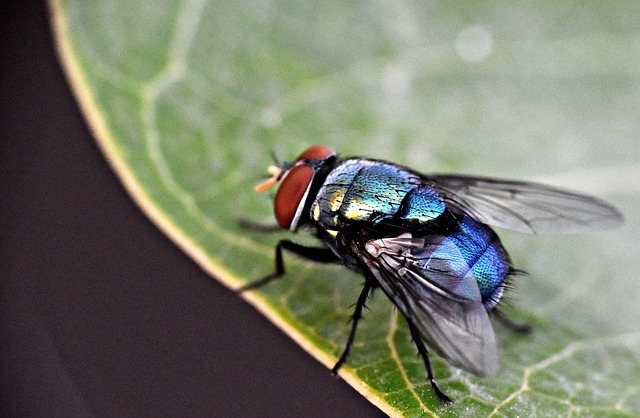Stinging pests like bees, wasps, and hornets pose health risks and create nuisances in residential areas. Residential stinging pest services employ tailored solutions based on each species' habits and life cycles, using methods like nest removal, trapping, and chemical treatments. Accurate identification of pest types is crucial for effective control. Non-chemical treatments, such as sealing entry points and using physical barriers, provide safe and eco-friendly solutions. Chemical solutions, including advanced pesticides with precise targeting, are conducted with safety protocols to eliminate infestations while minimizing environmental risks. Preventing stinging pests involves a multi-faceted approach, including sealing entry points, maintaining cleanliness, planting herbal repellents, and promptly contacting professional services for effective solutions.
Are you tired of painful stings from buzzing intruders? Understanding stinging pest infestations is the first step towards reclaiming your space. This article offers a comprehensive guide to eliminating these irritating visitors, focusing on both non-chemical and chemical treatments for residential stinging pest services. Learn about common types, their behavior, effective prevention strategies, and professional applications to ensure a sting-free home.
Understanding Stinging Pest Infestations: Common Types and Their Behavior
Stinging pest infestations can be a nuisance and even pose health risks, especially in residential areas. Understanding these pests is the first step to effective control. Common stinging pests include bees, wasps, and hornets, each with distinct behaviors that impact their interaction with humans and structures. Bees, for instance, primarily focus on pollen collection and nectar gathering, often nestering in secluded spaces like walls or tree hollows. Wasps, on the other hand, are more aggressive, seeking protein sources, particularly meat and sweet substances, which can lead them to frequent areas around homes, such as trash cans and outdoor dining spots. Hornets exhibit similar behaviors but tend to build larger nests, sometimes visible in attics or under eaves.
Residential stinging pest services play a vital role in managing these infestations, offering solutions tailored to each species’ habits and life cycles. Professionals employ techniques like nest removal, trapping, and chemical treatments, ensuring safety for residents and the environment. Identifying the specific pest type is crucial as it dictates the most effective control methods. With proper knowledge and tools, homeowners can collaborate with these services to achieve a pest-free living space, enjoying peace of mind without the sting.
Non-Chemical Treatments for Residential Stinging Pest Elimination
When it comes to eliminating stinging pests from your home, non-chemical treatments offer a safer and more eco-friendly alternative to traditional pesticides. These methods are particularly appealing for residential stinging pest services as they minimize exposure risks to family members and pets while still achieving effective control. Techniques such as sealing entry points, removing food sources, and using physical barriers can significantly reduce pest populations.
Professional pest control experts may employ strategies like sticky traps, which help monitor and capture insects without the use of chemicals. Additionally, biological control methods, including introducing natural predators or parasites, can disrupt the stinging pest lifecycle. These non-chemical treatments not only eliminate current infestations but also prevent future recurrences by addressing the underlying conditions that attract these pests in the first place.
Chemical Solutions: Safe and Effective Applications for Professional Services
Chemical solutions play a significant role in eliminating stinging pests, especially for professional residential stinging pest services. These treatments offer a range of safe and effective applications tailored to specific pest infestations. Professional exterminators use advanced chemicals that are designed to target and eliminate various stinging insects while minimizing risks to human health and the environment.
For instance, pyrethroids, a synthetic form of natural insecticidal compounds, are commonly used due to their quick knockdown effect on pests. Another option is organophosphates, which inhibit an enzyme crucial for nerve function in insects. These chemicals are applied with precision, ensuring that they reach the desired areas while avoiding unnecessary exposure. Professional services also employ safety protocols and personal protective equipment (PPE) to safeguard residents during treatment, making chemical solutions a reliable choice for effective residential stinging pest control.
Preventative Measures: Long-Term Strategies to Keep Your Home Pest-Free
Preventative measures are crucial long-term strategies for keeping your home free from stinging pests like bees, wasps, and hornets. One effective approach is to seal off potential entry points around your property. This includes checking for gaps in windows, doors, and other openings, and sealing them with weatherstripping or caulk. Regularly trimming trees, shrubs, and other vegetation away from your home also helps prevent pests from building nests nearby.
Additionally, maintaining a clean and clutter-free environment can deter stinging pests. Store food in airtight containers, promptly clean up spills or crumbs, and avoid leaving out sweet or fermented items that may attract them. If you have a garden, consider planting herbs like mint, lavender, or basil, which naturally repel these pests. Regularly inspect your property for any signs of pest activity and address issues immediately by contacting professional residential stinging pest services for prompt and effective solutions.
When dealing with stinging pest infestations, a comprehensive approach is key. By understanding the behavior of common types and exploring both non-chemical and chemical solutions, homeowners can effectively eliminate these pests. Professional residential stinging pest services offer safe and tailored applications, while long-term preventative measures ensure these intruders don’t return. Implement these strategies to reclaim your space from these pesky visitors.
